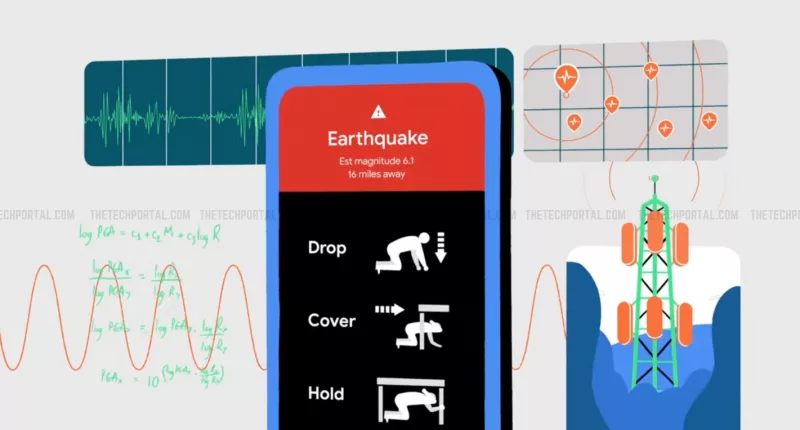In a significant move towards enhancing public safety, Google has joined forces with the National Disaster Management Authority (NDMA) and the National Seismology Center (NSC) in order to introduce an Earthquake Alert System designed to provide early earthquake alerts for Android users in India. This team-up ensures that the system is finely tuned to the specific seismic characteristics and needs of the region.
Google’s bid to prevent numerous casualties from the natural disaster (before it occurs in the first place) harnesses the capabilities of the sensors in your smartphone – such as accelerometers – to function as miniature seismometers, enabling them to detect seismic activity. The goal is to provide timely and potentially life-saving early earthquake alerts to Android users in regions likely to be impacted by earthquakes, and is expected to roll out over the next week.
The built-in accelerometers in Android smartphones are sensitive enough to detect the initial tremors of an earthquake. When multiple devices in the same vicinity detect seismic activity simultaneously, Google’s server interprets this as a potential earthquake event. Based on this data, the server calculates the estimated epicenter and magnitude of the earthquake. It then swiftly dispatches alerts to nearby Android devices. These alerts often reach users’ smartphones several seconds before they feel the actual shaking, providing valuable time to take precautions.
The Earthquake Alert System operates by issuing two types of alerts to Android users. The “Be Aware” alerts alerts are dispatched to users who are experiencing Modified Mercalli Intensity (MMI) levels of 3 & 4 shaking during an earthquake with a magnitude of 4.5 or greater. When received, these alerts display a notification on the user’s screen. Importantly, they do not produce any sound if the user’s phone is in Do Not Disturb mode or silent.
The “Take Action” alerts, on the other hand, are more urgent and are directed towards users experiencing MMI levels of 5 or higher shaking during an earthquake with a magnitude of 4.5 or greater. In this scenario, the alert overrides the phone’s notification settings, including Do Not Disturb, and emits a loud sound. Additionally, it provides specific safety recommendations to users, such as taking cover under a sturdy piece of furniture.
The Earthquake Alert System by Google has already been deployed successfully in several countries across the globe. In India, the system will be accessible to Android users with devices running Android 5 or newer. To receive earthquake alerts, users need to meet certain criteria: they must have an active internet connection, enable location settings on their devices, and turn on the earthquake alerts setting in their device settings.
In addition to its Earthquake Alert System, Google has been actively working with the NDMA to provide users with vital safety information regarding various natural disasters, including floods and storms. This information is accessible through Google Search and Maps. Users can obtain such information by conducting searches with relevant keywords, such as “Earthquake near me,” using Google.
The Tech Portal is published by Blue Box Media Private Limited. Our investors have no influence over our reporting. Read our full Ownership and Funding Disclosure →






